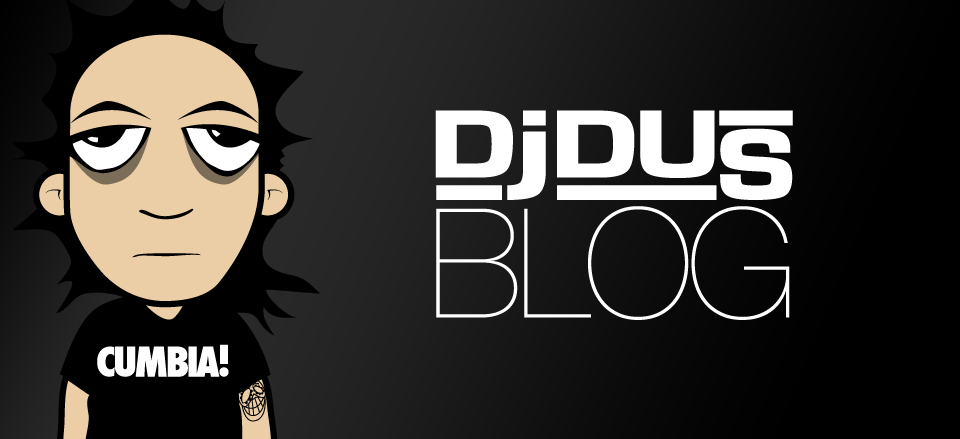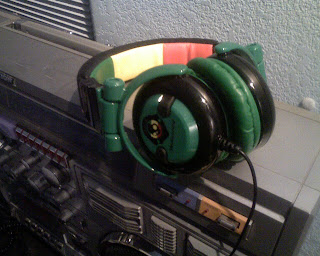Monday, January 21, 2008
Sunday, January 20, 2008
partying in austin
Friday, January 11, 2008
do you like sushi?
Sunday, January 6, 2008
NYE W BOOMBASTA
Wednesday, January 2, 2008
PHARCYDE passin' me by mashup
PHARCYDE CUMBIA.mp3
Tuesday, January 1, 2008
things i love about holidays
CUMBIA WIKIPEDIA
Cumbia is originally a Colombian folk dance and dance music and is Colombia's representative national dance and music along with vallenato. The Cumbia is a autochthonous dance and music from the Caribbean Coast of Colombia, with variants of equally folk in Panama.
It is a popular music and dance in different Latin-American countries, where it has followed different variants as the Mexican, Argentine, Peruvian, and others.
Modern cumbia includes instrumental mixing; guitars, accordions, bass guitar, modern flutes and modern deep-toned drums and other percussions. The basic rhythm structure is 4/4. Cumbia is the net intersection of two cultures that settled in the region of what is now northern Colombia at different times; the Amerindians and African slaves. Cumbia began as a courtship dance practiced among the slave population that was later mixed with the European instruments and influence.
Contents[hide] |
[edit] Origins
Cumbia is a variant of the African Guinean cumbe music. Cumbia started in the northern region of Colombia, mainly in or around Cartagena during the period of Spanish colonization. Spain used its ports to import African slaves, who tried to preserve their musical traditions and also turned the drums and dances into a courtship ritual. Cumbia was mainly interpreted with just drums and claves.
The slaves were later influenced by the sounds of Amerindian instruments from the Koguis and Kuna tribes settled between the Sierra Nevada de Santa Marta and the Montes de María; like the millo flutes, gaita flutes and güiros. Africans and Amerindians working together as slaves created a mixture from which the gaitero (cumbia interpreter) appeared, with a defined identity by the 1800s. (These gaiteros are not to be associated with the Venezuelan Zulian gaiteros.) The European guitars and accordions were added later, through Spanish influence.
[edit] Cumbia as a courtship ritual
The danced courtship ritual was rhythmically performed with music played by groups of men and women couples; women playfully waving with their long skirts and holding a candle, while the men danced behind the women, with one hand on his back and the other one holding his hat, putting it on and off and waving it. Men also carried a red type of handkerchief which they either wrapped around their necks, waved in circles in the air or handheld together with women. Until mid-20th century, cumbia was considered a vulgar dance, practiced only by the lower classes.
[edit] Musical instruments
Traditional instruments used in cumbia:
- Drums: Cumbia drums were of African origin and were brought along with slaves to the Americas by the Spanish conquerors. Africans used wood, ropes made out of sisal (Agave sisalana), and animal dry skins to make their drums. They either played the drum by hitting it with their hands or with sticks. Sometimes they wrapped the tip of the sticks with dry skin to prevent wearing off the drum. Cumbia interpreters produce variations of the sound emitted by the drum by hitting it on almost every area of the wooden base and dry skin.
- Claves: claves are a pair of hard thick sticks, usually used to set the beat through out the song.
[edit] Cumbia in the American Continent
Cumbia has generally been enjoyed by the lower classes of the American continent due to its rather simple sound and lyrics. Due to the diversity in Latin America, the music has undergone changes as it mixed with the regional music styles. Therefore, there are several variations of the music.
[edit] Colombia
Today traditional cumbia is preserved and considered representative of the Colombian identity, but especially in the Northern Caribbean coast. It is also associated to Barranquilla's Carnival and the Vallenato Legend Festival. Modern forms of Cumbia are only preferred by the lower classes, but widely accepted when fusioned with other genres such as vallenato or rock, as does Carlos Vives, for example.
[edit] Argentina
- Main article: Argentine cumbia
The music tends to be appreciated more by the lower social classes, and is often scorned by the upper classes. In Argentina, for example, this social divide is exemplified by the cumbia villera phenomenon, that intends to represent and resonate with the poor and marginalized dwellers of villas miseria (shanty towns and slums), with lyrics glorifying theft and drug abuse, much like Northern American hip hop. However, it must be noted that a lighter form of cumbia enjoyed widespread popularity in Argentina during the 1990s (see Argentine cumbia).
[edit] Chile
Popular with the lower social classes, it is often made fun of by the middle and upper classes. Nevertheless, it is widely danced at parties and gatherings.
[edit] Mexico
- Main article: Mexican cumbia
Cumbia music in Mexico is very diverse, there is a diversity of styles from the south to the north. Puebla City is the center of the Cumbia Sonidera, a rebirth of Mexican Indian tribal sounds with modern electronic textures and patterns. The emigration of Mexicans to the USA has also increased the music's popularity in the USA.
[edit] Peru
Peruvian Cumbia
Peruvian Cumbia is generally known as "Chicha." It is a subgenre of the Cumbia, and it is very popular with the lower social classes. The higher classes generally view the music with contempt but it is not very popular among them. Nevertheless, the popularity of the music has been increasing over the years. Some musical groups that play Chicha are: Agua Marina, Armonia 10, Agua Bella, etc.
Tecnocumbia
Starting in Peru and Bolivia, the style derived from the Andean "Chicha" and with the addition of synthesizers and other instruments of that ilk. Due to this technological changes to the music, it became known as the "tecnocumbia." The popularity of the tecnocumbia has been increasing over the years, and many countries such as Argentina, Mexico, and Chile have adapted it to their particular likings.
[edit] United States
Selena, The Kumbia Kings, etc.
Mexican cumbia is the form of dance and music found in Mexico, derived from the form of music originated in Colombia, South America, called Cumbia during the Spanish colonial times.
It consists of several different rhythms in its own. It includes the Cumbia Norteña (Northern Cumbia), consisting of drums, congas, accordion, bajo sexto, and bass guitar. Examples of Cumbia Norteña are bands like Los Tigirillos and Grupo Control. Mexican singer Rigo Tovar further popularized this music by adding elements of rock and roll and introducing electric guitars and synthesizers in the 1970s and 1980s. [1]
[edit] Cumbia Sonidera
Another style of cumbia popular around central Mexico and USA is the Cumbia Sonidera, which stems from the word "sonido" (sound) or the word to describe DJs that spin popular club music and cumbia at parties or bailes. Sonidero music has gained immense popularity in large part because of the mobility of the sonidos and the willingness of DJs to give out dedications to peoples barrios(neighborhoods) or Bandas. DJs also manipulate the cumbias by slowing or speeding them up, creating what are called "mega cumbia mixes", and adding their own intros and outros to their presentations. The DJs will also include sets of Mexican heavy metal, salsa, and other popular music. The most noticed "sonidos" would be Sonido Condor, Sonido Fantasma C.J., Sonido La Conga Pedro Perea Mix, In New York Sonido Potencia Latina, Sonido Magia, Sonido Libertad, Sonido Arcoiris, Sonido Casanova de Ricardo y Marcos, and Sonido Kumbala. In Chicago Sonido Caney, Sonido Senorial, Sonido Arcania, Sonido Nueva Generacion, in Los Angeles Sonido Fantasma T&D. The cumbia sonidera also consists of similar instrumental elements (guitar, keyboards, bass guitar, drums, congas, and guiro.) This music also has elements of son, guaracha, rumba, and salsa. The sounds of Colombian groups like La Internacional Sonora Show, Grupo Cañaveral, Sonora Dinamita, and Aniceto Molina can be heard in Mexican acts like Fito Olivares y La Pura Sabrosura, Los Chicos Del Barrio, and Los Angeles Azules. Cumbia sonidera and cumbia villera share similar influences, particularly in the use of keyboards and synthesizers. Songs such as "El Paso del Gigante" by Grupo Soñador, "Gritaria" by Los Telez, "Brother Loui" by Cumbia Sonicos, "Promesas de Amor" by Los Chavos JG, "Me Desespero Por Ti" by Grupo Pesadilla, "La Cumbia De Las Corcholatas" by Los Deakino, and "Cumbia Chinantla" by Los Daddys
[edit] Cumbia Pegassera
- Corazon Entero by Pegasso is an example of cumbia Pegassera. [2]
- Problems playing the files? See media help.
Yet another very popular and distinctive style in cumbia is what is denoted or tagged as "estilo Pegasso", Spanish for "Pegasso-style". Other phrases used to describe this style is "onda pegassera", "sonido pegasso", and "musica pegassera". This style of cumbia has roots with the great Rigo Tovar when he introduced acoustical instruments into his band enssemble. Although this cumbia style had its glory years in the 80's decade and early 90's throughout Mexico and the US, it is still popular in the northern Mexican states of Nuevo Leon and Tamaulipas. These states' bordering cities with Texas and throughout Texas such as Houston, Dallas, Fort Worth still have a large fan-base of this style. Outside of Texas, there is still an enumerable audience of this cumbia style that are spread in other US States.
The band that is credited with this style is Grupo Pegasso, bearing the name that connoted the phrase "onda Pegassera" and the such. Due to the band's popularity in the early 80's, it's style was instilled onto other bands which followed with a very similar, yet distinctive "style". Bands which were popular such as Zaaz, Cupido, Corcel Negro are considered to fall under the "pegasso-syle" umbrella.






















